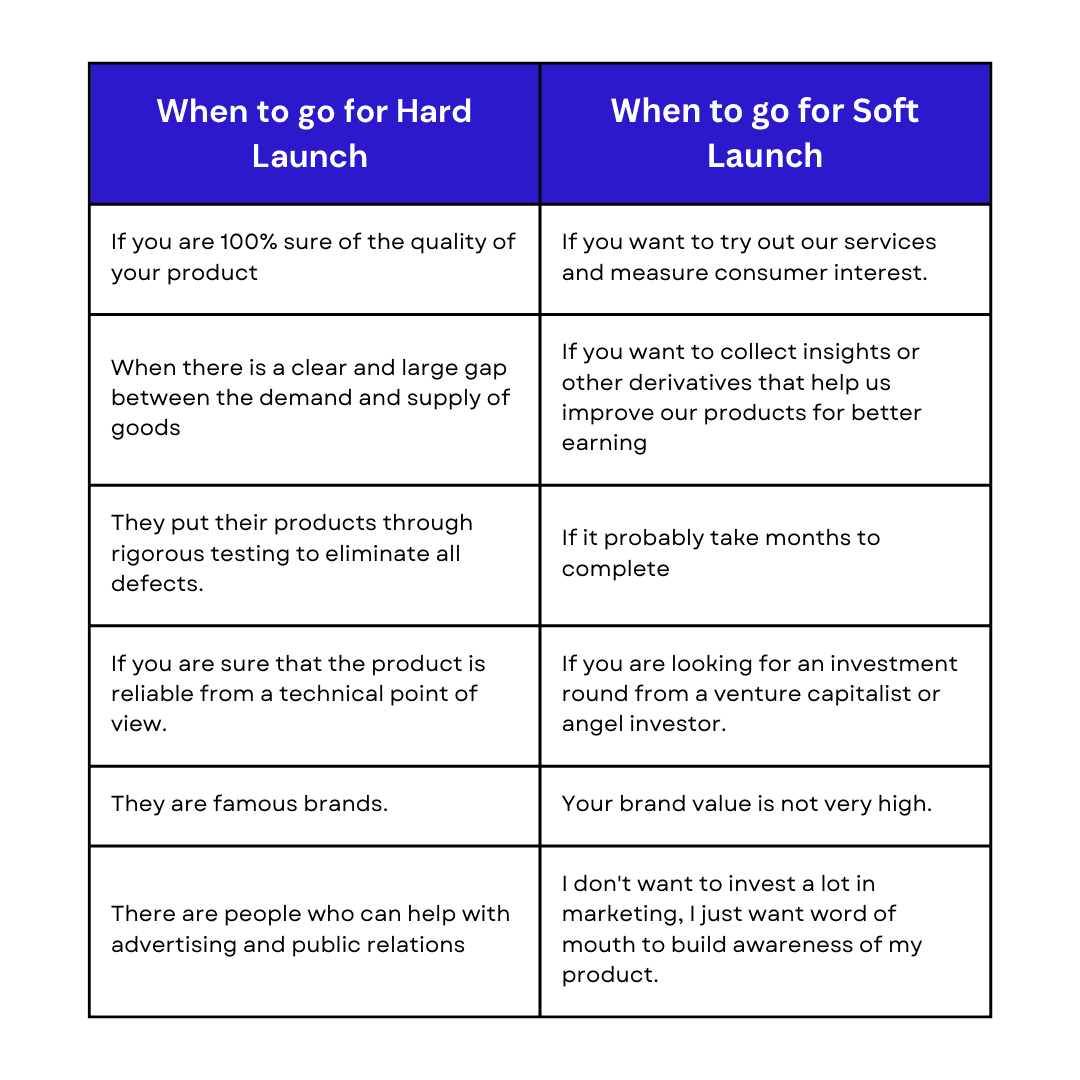There are many decisions to be made when you start marketing your product. Some of these decisions are determined by resources. Others are strategic. One of the first decisions you have to make is whether you will have a hard or soft launch. This post explains the difference between the two and the benefits of each.
1/ What is a hard launch plan?
A hard launch is a formal formal launch of a bug-free product to market. The media and public have seen the official announcement. Therefore, more people know about the launch and pay attention to it.
A tough start is great for getting the attention of the media and potential clients. Opening a large store (with a ribbon cutting ceremony), releasing a computer game, or launching a social media marketing campaign are good examples of a difficult launch. Event details will be available to the public offline or online. Hard start challenges arise when there are operational issues.
Customer retention and responsiveness can be severely impacted if there are technical issues or if your offer does not resonate with your target audience. This can happen, for example, if the restaurant is slow to serve food or if his marketing campaigns are not having the desired effect on the target group.

2/ The advantages of a hard launch plan
It takes more time and money to get off to a rough start, but there are some real benefits to going down this path.
- Faster Sales Growth – Intensive marketing efforts and resulting new product awareness make it easier to generate sales.
- Competitive Advantage – Standing out in a crowded market can be difficult. If you make a lot of noise with a hard start, you are more likely to be heard.
- Easier Marketing – Hard Start The compactness of his marketing campaigns allows you to create more targeted and precise plans so you can focus on your marketing efforts. Aim for a splash instead of slow growth, so you can hit with the power you have.
- Advertising — A hard launch gets more attention with a big marketing effort. Done well, it can create awareness and increase brand awareness.
The success of a tough go-to-market depends on your marketing campaign, so plan strategically to make it as effective as possible.

3/ The disadvantages of a hard launch plan
Below are some of the drawbacks of a hard launch plan:
- It may take more time and reach a larger audience compared to a soft launch.
- It may require more funding and resources as well as intensive planning and development. – Soft launches are cheaper, but hard launches often require more money and resources, as well as advertising and marketing campaigns.
- It may increase the risk of damaging the reputation of your products and services. If a product or service fails to meet customer expectations, this not only leads to the loss of a large number of resources but also damages the company’s reputation. Compared to a soft start, a hard start is more difficult to adjust to.
- A tough launch can create competition from other brands and products.
4/ What is a soft launch plan?
A soft launch is the introduction of a product or service to a small or limited market for the first time. This allows companies to test their markets and products without expending a lot of resources to ensure that the quality of their products or services is sufficient for a major launch. In other words, a soft launch is a pre-marketing strategy that brings a product or service to market on a small scale so that the company can learn from the experience before taking on greater risks.

5/ Soft launch plan templates: what to consider
A launch plan template is a guide to launching a new product or service to your company’s target audience. Many companies use launch plan templates to develop their product positioning and key marketing messages. This keeps your organization organized and your brand consistent. You can also create an implementation plan to identify key tasks, set timelines, and communicate goals to company stakeholders.
What to consider when creating soft launch plan templates?
- Define go-to-market goals and intentions
- Identify your target audience
- Have a marketing strategy
- Create a launch schedule for him
- Assemble Teams and Resources
- Create a launch budget
- Execute Plans and Track Results

6/ The advantages of a soft launch plan
A soft launch has many benefits, including A more sophisticated lead generation and retention strategy. From avid users to early adopters, the service is usually provided for free and their constructive criticism and feedback are taken into account, so the widespread launch of a product provides immense value to consumers.
Matching consumer responses to products is a prudent business strategy for optimally performing features, functions, and other aspects of the Service and providing users with the exact experience they expect.
Soft launches are also easier on a budget as selected consumers receive invitations delivered via a personal method such as email, SMS, or in person.
7/ The disadvantages of a soft launch plan
The main drawback of a soft launch is that it jeopardizes the product’s unique value proposition in the market. This could be imitated by opportunists.
- This idea could be copied by competitors with improvised features and features.
- Not so cheap compared to Hard Launch
- Extended time to market
8/ Which startup launch strategy is right for my business?
If you have a product that you want to measure the price and engagement factor for, a soft launch is a better option. Improving technical details and user experience factors with timely updates provides user behavior and marketing insights to help your product solidify its position in the market.


9/ Can you use both launch strategies together?
Whether a soft or hard start is more appropriate depends on several factors. Consider a hard launch if your product is endorsed by a recognized brand, the product or service faces stiff competition, could be copied, and the budget is reasonable. Conversely, if your product or service doesn’t have a popular brand, has limited resources, or you aren’t sure how well it will perform in the market, you should consider a soft launch.
10/ Conclusion
A soft launch is used to introduce a product or service to a small audience to test the product on the market, while a hard launch is used to introduce a product or service to a larger audience. Both methods are great ways to launch your product or service, but understanding both marketing strategies is a key requirement for a successful business.






